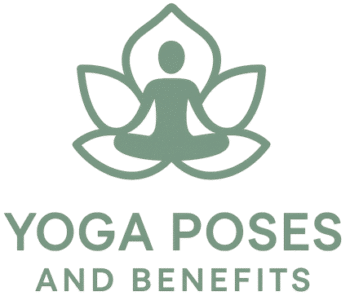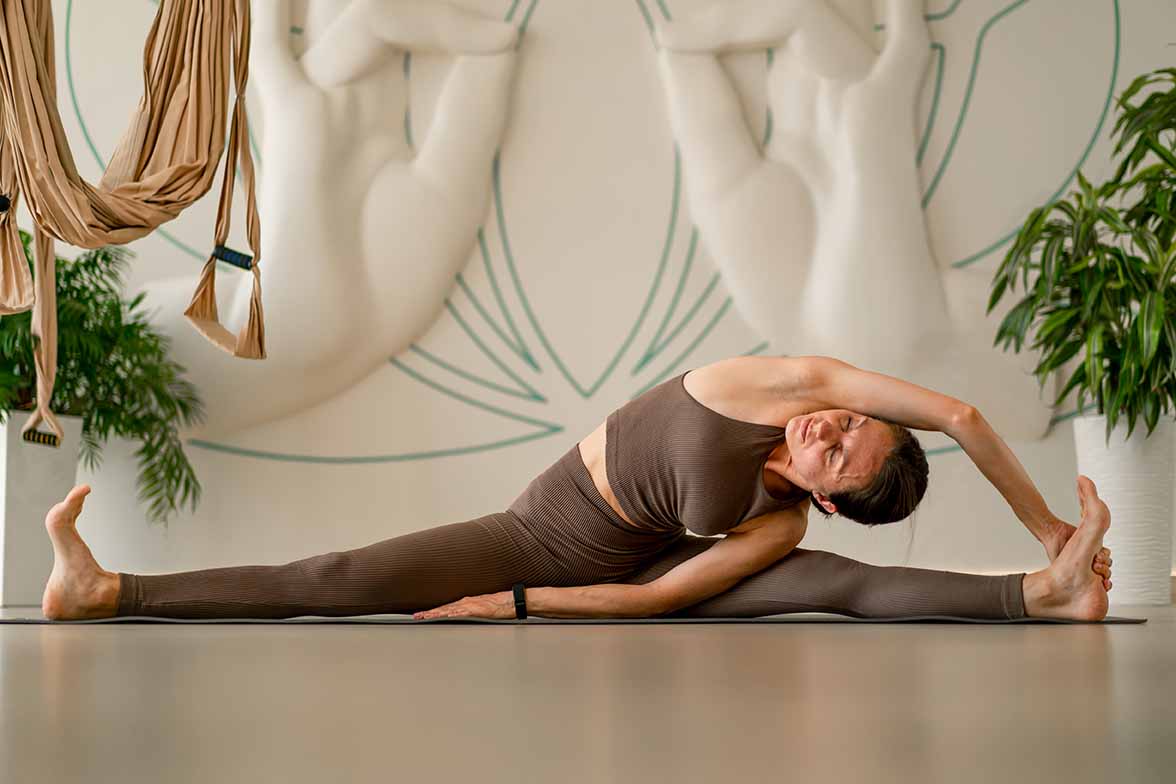The Benefits of Yin Yoga
If you’re considering yin yoga, you’re exploring a practice that can significantly enhance both your physical and mental well-being. Yin yoga is a slower, more meditative form of yoga focused on long-held poses that target the body’s deep connective tissues. Unlike more active styles like vinyasa or power yoga, yin yoga prioritizes stillness and invites a deeper awareness of the body’s subtleties.
Here are some key benefits of yin yoga:
- Deep Stretching and Flexibility: Extended holds in poses allow for a deep stretch of muscles and connective tissues, improving flexibility and range of motion.
- Stress Relief and Relaxation: The slow pace and meditative nature of yin yoga help calm the nervous system, reduce stress, and promote relaxation.
- Enhanced Joint Health: Gentle stretching and compression of the joints enhance joint health and mobility, reducing the risk of injury.
- Improved Energy Flow: Yin yoga encourages the flow of energy (or qi) throughout the body’s meridian pathways, supporting overall balance and vitality.
Incorporating yin yoga into your routine can lead to significant changes in your physical, emotional, and energetic well-being, fostering a more balanced and harmonious life both on and off the mat.
What is Yin Yoga?
Yin yoga, a practice rooted in ancient Chinese philosophy and Taoist principles, offers a unique approach to yoga that focuses on long-held, passive poses designed to target the deep connective tissues of the body. Unlike more dynamic styles of yoga, such as vinyasa or power yoga, yin yoga emphasizes stillness and relaxation, making it an ideal complement to a more active yoga practice or a standalone practice for those seeking a slower-paced, meditative experience.
Transitioning into a yin yoga pose involves finding a comfortable position and allowing the body to relax deeply into the pose for an extended period, typically ranging from one to five minutes or even longer. This extended hold encourages the muscles to relax, allowing for a deeper stretch and greater flexibility in the connective tissues, joints, and fascia.
Incorporating yin yoga into a regular yoga practice can offer a range of benefits for both the body and mind. Here are some key benefits of yin yoga to consider:
- Improved flexibility and joint mobility
- Enhanced circulation and lymphatic flow
- Stress relief and relaxation
- Increased mindfulness and mental clarity
- Release of tension and tightness in the body
- Improved energy flow and vitality
- Enhanced ability to sit comfortably for meditation
Practitioners of yin yoga often find that the practice helps them cultivate a greater sense of patience, acceptance, and surrender, both on and off the mat. By embracing the principles of yin yoga, practitioners learn to listen to their bodies, honor their limitations, and find peace in the present moment.
Overall, yin yoga offers a gentle yet profound way to nourish and rejuvenate the body, mind, and spirit, making it a valuable addition to any yoga practitioner’s toolkit.
A Unique Perspective on Yin Yoga Practice
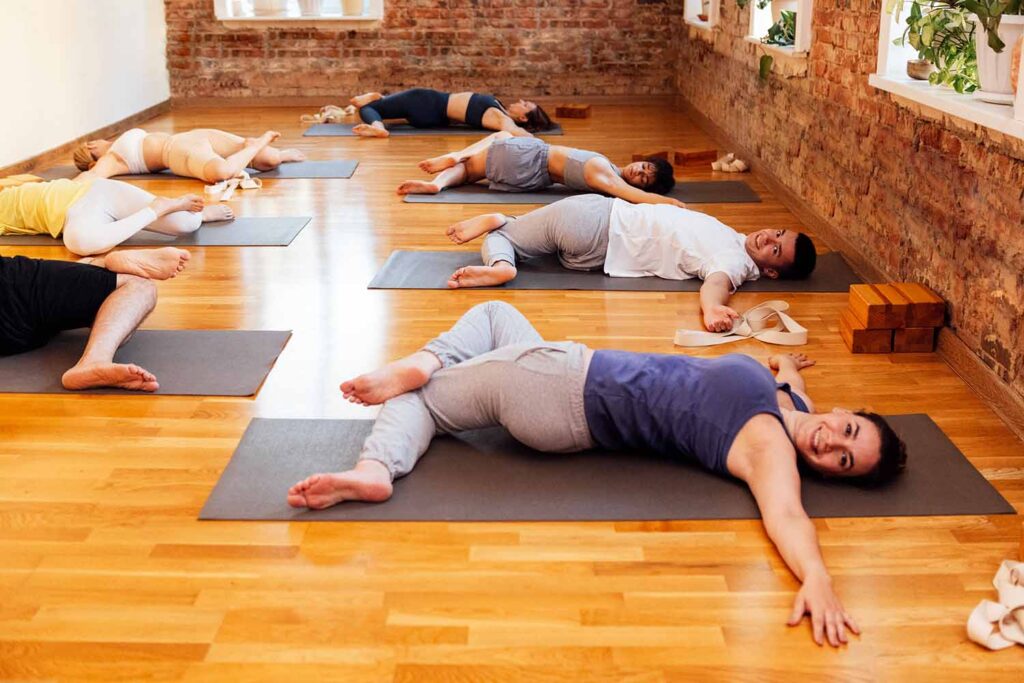
Engaging with yin yoga is not just about adopting a series of poses; it’s about embracing a unique philosophy of stillness and surrender that offers a contrast to more vigorous yoga forms. This practice encourages practitioners to explore their edges — both physically and mentally — while maintaining a state of calm and awareness.
Yin yoga emphasizes:
- Long-Held Poses: The extended duration of poses in yin yoga—from one to five minutes or longer—creates an opportunity for the connective tissues to stretch and release tension more effectively than shorter holds in other yoga styles.
- Passive Stretching: Rather than using muscular effort to achieve a pose, yin yoga relies on gravity and relaxation to allow the body to gently open. This approach can enhance the body’s flexibility and range of motion while promoting a sense of ease and acceptance.
- Mindful Breathing: Breathing deeply and slowly is central to yin yoga. This conscious focus on breath helps regulate the nervous system, promotes a deeper relaxation response, and anchors awareness in the present moment.
- Exploration of Sensations: In yin yoga, practitioners are encouraged to notice sensations—whether they are stretching, tingling, or even discomfort—without judgment or resistance. This mindful observation fosters a deeper understanding of the body’s feedback and personal limits.
While other forms of yoga might prioritize physical strength, endurance, or cardiovascular health, yin yoga uniquely develops patience, mindfulness, and a deep connection to one’s inner experience. This practice serves as a counterbalance to the high-energy demands of modern life and encourages a slower, more introspective approach to self-care.
By incorporating yin yoga into your regular routine, you can tap into these deeper levels of awareness, cultivating a practice that enriches not just your flexibility and joint health, but also your mental clarity and emotional resilience. This approach invites a more profound exploration of yoga, enhancing the overall experience both on the mat and in everyday life.
Importance of Understanding Yin Yoga Benefits and Practice
As both a practitioner and a teacher, understanding the benefits of yin yoga is essential for maximizing its impact on your overall well-being and helping others do the same. Knowing what this practice can offer allows you to make conscious choices about how to integrate it into your routine and customize it to fit your or your students’ unique needs and goals.
As a Yin Yoga Practitioner:
- Focus on Intentional Practice: Understanding the benefits of yin yoga allows you to approach your practice with intention and clarity. Knowing why you are holding each pose for an extended time helps you stay focused and connected to your purpose, whether it’s for deep stretching, stress relief, or increased mindfulness.
- Personalized Approach: Recognizing what you want to achieve with yin yoga—be it relaxation, flexibility, or joint health—lets you select poses and sequences that align with your personal goals. This customization ensures that your practice is both relevant and rewarding.
- Cultivating Patience and Presence: Yin yoga is about being present with discomfort and sensations. Understanding the deeper benefits of a yin yoga practice can help you stay patient during long holds, allowing you to explore your body’s limits safely while nurturing a mindset of acceptance.
- Enhancing Motivation: Knowing how yin yoga can positively impact your body, mind, and spirit can strengthen your commitment to maintaining a consistent practice. The more you understand the benefits of yin yoga, the more likely you are to prioritize it amid a busy lifestyle.
As a Yin Yoga Teacher:
- Tailoring the Practice to Students’ Needs: Understanding the benefits of yin yoga enables you to offer practices that meet the unique needs of your students. Whether they seek physical benefits like flexibility and joint health or mental benefits like stress relief, you can design sessions that provide meaningful experiences.
- Educating and Guiding Effectively: As a teacher, being well-versed in the benefits of yin yoga helps you educate your students about why they are doing what they’re doing. This knowledge builds trust and encourages students to explore the practice more deeply.
- Creating a Supportive Environment: Awareness of the challenges and benefits of yin yoga allows you to create a supportive environment that guides students through the mental and physical aspects of the practice. You can offer modifications, explain the physiological effects, and provide emotional support as needed.
- Encouraging Mindfulness and Self-Exploration: A deep understanding of yin yoga benefits helps you promote mindfulness and self-exploration in your students. You can encourage them to observe their sensations, emotions, and thoughts during long-held poses, fostering greater self-awareness and personal growth.
Understanding Yin: The Subtle Energy
Yin energy is often described as passive, receptive, and feminine in nature, contrasting with the active, dynamic qualities of Yang energy. In Yin Yoga, practitioners focus on accessing and harmonizing Yin energy to promote balance and well-being in both body and mind.
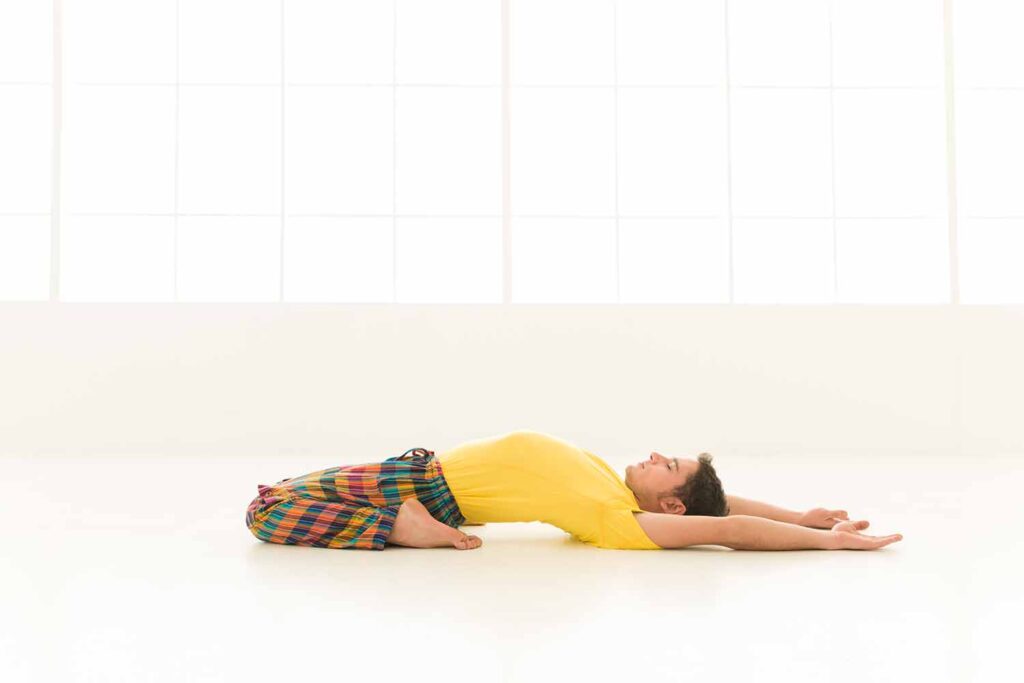
- Exploring Meridians and Energy Lines: In Traditional Chinese Medicine (TCM), the body’s vital energy, or Qi, flows through a network of meridians or energy lines. Yin Yoga poses are designed to target specific meridians, stimulating the flow of Qi and promoting balance and vitality throughout the body.
- Understanding the Five Elements: TCM categorizes Qi into five elements—wood, fire, earth, metal, and water—each associated with specific organs and emotions. By incorporating Yin Yoga poses that correspond to these elements, practitioners can balance their energy and address imbalances or blockages within the body.
- Cultivating Mindfulness and Presence: Practicing Yin Yoga invites practitioners to cultivate mindfulness and presence on the mat, tuning into the subtle sensations of the body and observing the flow of energy within. By cultivating this awareness, practitioners can deepen their connection to themselves and their inner wisdom.
- Embracing the Flow of Prana: In yoga philosophy, prana is the life force energy that animates all living beings. In Yin Yoga, practitioners harness the flow of prana through breath awareness and intentional movement, fostering a sense of vitality and aliveness in the body.
- Honoring the Interconnectedness of Body and Mind: Yin Yoga recognizes the interconnectedness of body, mind, and spirit, acknowledging that imbalances in one aspect of our being can affect the others. By practicing Yin Yoga, practitioners can promote harmony and integration on all levels of their being, fostering a deeper sense of wholeness and well-being.
Benefits of Yin
Physical Benefits of Yin Yoga
For yoga practitioners, understanding the physical benefits of yin yoga can significantly enhance their practice, providing clear, practical advantages. Practitioners can expect a variety of physical improvements, including greater flexibility, better joint health, and overall increased mobility.
Exploring the physical benefits of yin yoga reveals several key advantages for practitioners to consider:
Deep Stretching and Flexibility: Holding yin yoga poses for extended periods allows for deep stretching of the muscles and connective tissues, promoting greater flexibility and range of motion. This extended duration encourages the muscles to relax, facilitating a deeper stretch and increased flexibility over time.
Improved Joint Health: By gently stretching and compressing the joints, yin yoga helps to improve joint health and mobility. This can reduce the risk of injury and alleviate stiffness and discomfort in the joints, particularly in areas prone to tightness, such as the hips, lower back, and shoulders.
Enhanced Circulation and Blood Flow: The passive nature of yin yoga poses promotes circulation and blood flow throughout the body. This increased circulation helps to deliver oxygen and nutrients to the muscles and tissues, promoting healing and rejuvenation.
Release of Tension and Tightness: Yin yoga encourages the release of tension and tightness in the body, particularly in areas where stress and tension tend to accumulate, such as the neck, shoulders, and hips. This can help to alleviate chronic pain and discomfort, promoting a greater sense of ease and relaxation.
Embracing the physical benefits of yin yoga empowers practitioners to cultivate a deeper connection to their bodies and unlock their full potential on the mat. By incorporating yin yoga into their regular practice, practitioners can experience profound improvements in their physical well-being, other yoga practices, like Hatha and Ashtanga, and enhance their overall quality of life and vitality.
Mental and Emotional Benefits of Yin Yoga
Exploring the mental and emotional benefits of yin yoga shows that it offers more than just physical advantages. Practitioners can gain a deeper sense of calm, clarity, and emotional resilience. This aspect of the practice promotes self-awareness and inner peace, enhancing overall well-being.
Stress Reduction and Relaxation: The slow, meditative nature of yin yoga induces a state of relaxation, calming the nervous system and reducing levels of stress hormones such as cortisol. This can help practitioners to manage stress more effectively and cultivate a greater sense of calm in their daily lives.
Emotional Healing and Release: Holding yin yoga poses for extended periods provides an opportunity for practitioners to tune into their emotions and release any pent-up feelings or emotional tension stored in the body. This process of emotional release can be deeply healing, allowing practitioners to let go of negativity and cultivate a greater sense of emotional resilience.
Enhanced Mindfulness and Presence: The practice of yin yoga encourages practitioners to be fully present in the moment, cultivating mindfulness and awareness of their thoughts, feelings, and sensations. This heightened sense of presence can help practitioners to develop a greater sense of clarity and perspective, reducing mental chatter and promoting a deeper connection to themselves and the world around them.
Strengthened Mind-Body Connection: Through the gentle stretching and relaxation of yin yoga poses, practitioners can develop a stronger mind-body connection, fostering a deeper understanding and appreciation of their bodies’ sensations and needs. This increased awareness can help practitioners to make more conscious choices and respond to challenges with greater wisdom and compassion.
Yin Yoga for Stress Relief and Relaxation
Exploring yin yoga as a tool for stress relief and relaxation unveils a powerful approach to managing the demands of modern life and finding peace amidst chaos. The quiet, slow, intentional setting of yin offers practitioners a sanctuary where they can unwind, let go of tension, and cultivate a sense of calm in both body and mind. Teachers should strive toward quiet music with a slower tempo. I often use meditative or classical music without words. Practitioners should be encourage to move with slow, gentle movements and take transitions slowly.
Slow, Meditative Practice: The slow, deliberate pace of yin yoga invites practitioners to shift into a more relaxed state, allowing them to let go of the busyness of their minds and fully immerse themselves in the present moment.
Deep Stretching and Release: Holding yin yoga poses for extended periods provides an opportunity for practitioners to release tension and tightness stored in the body, particularly in areas where stress tends to accumulate, such as the neck, shoulders, and hips.
Activation of Relaxation Response: The passive nature of yin yoga poses activates the body’s relaxation response, triggering the parasympathetic nervous system and reducing levels of stress hormones such as cortisol. This can help practitioners to experience a greater sense of calm and tranquility both during and after their practice.
Mindfulness and Awareness: The practice of yin yoga encourages practitioners to cultivate mindfulness and awareness of their thoughts, feelings, and sensations. By tuning into their breath and body, practitioners can develop a greater sense of presence and inner peace, allowing them to navigate life’s challenges with greater ease and resilience.
Embracing yin yoga as a practice for stress relief and relaxation empowers practitioners to reclaim their sense of calm and balance in an often hectic world. By incorporating yin yoga into their regular routine, practitioners can experience profound shifts in their physical, mental, and emotional well-being, paving the way for a more peaceful and harmonious life.
Practicing Yin Yoga
Yin Yoga Poses
Transitioning into an exploration of key Yin Yoga poses unveils a diverse range of postures designed to target the deep connective tissues of the body and promote relaxation and flexibility. Understanding these poses allows practitioners to tailor their practice to meet their specific needs and goals, cultivating a deeper sense of balance and well-being on the mat.
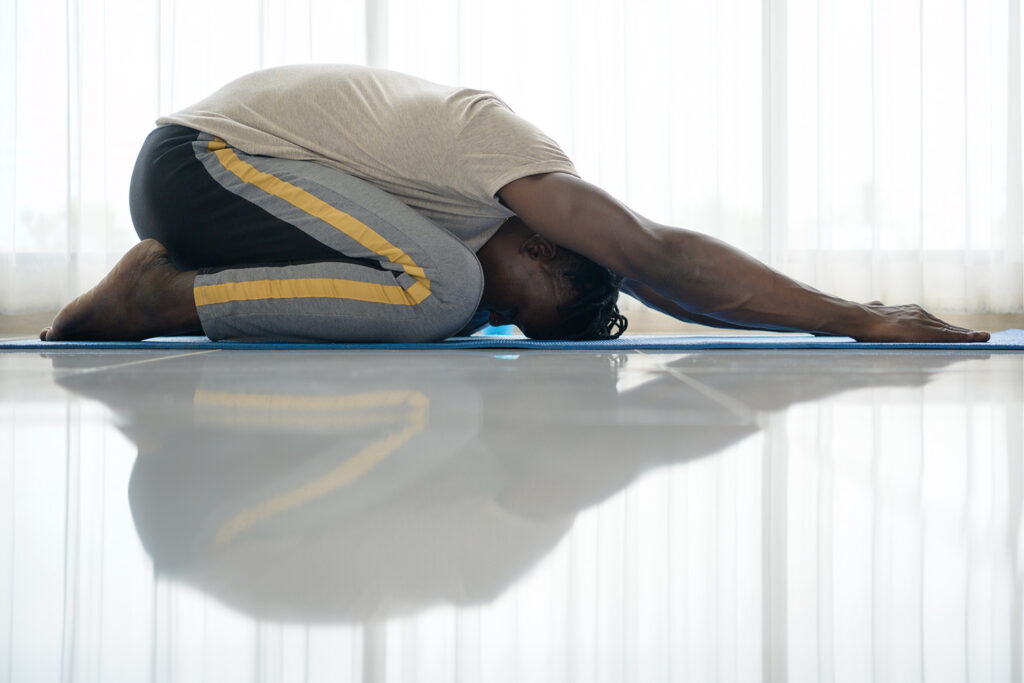
Child’s Pose (Balasana): This gentle forward fold stretches the hips, thighs, and lower back, promoting relaxation and release of tension in the spine. Practitioners can modify the pose by using props such as bolsters or blankets for added support.
Dragon Pose (Yin Lunge): Dragon pose in yoga stretches the hip flexors, groin, and quadriceps, promoting greater flexibility and mobility in the hips and pelvis. Practitioners can deepen the stretch by sinking deeper into the pose and focusing on their breath to release tension.
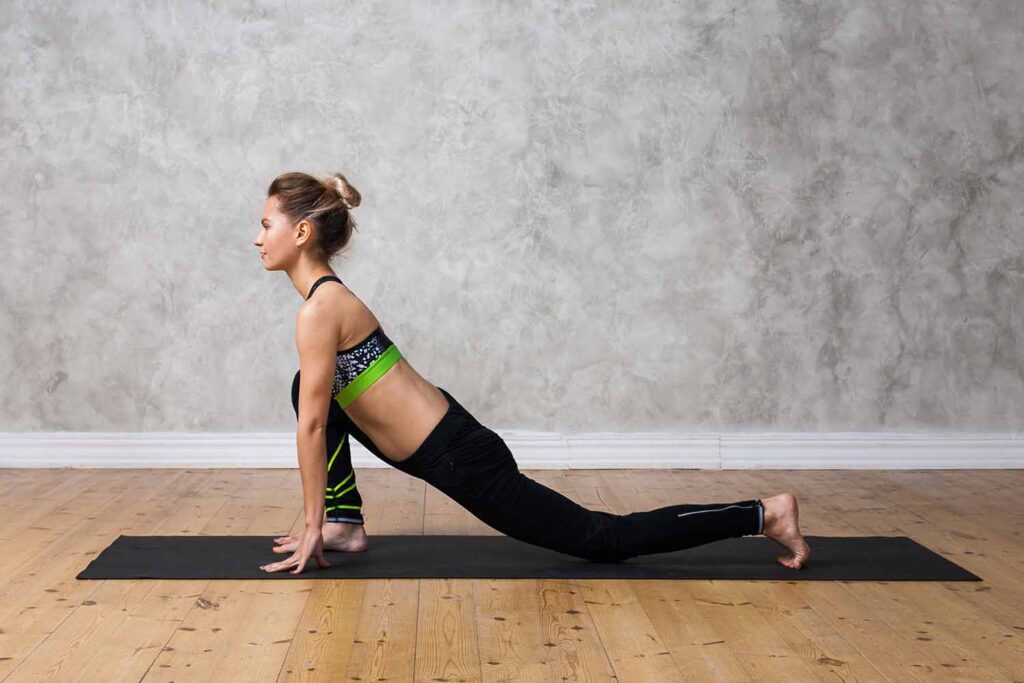
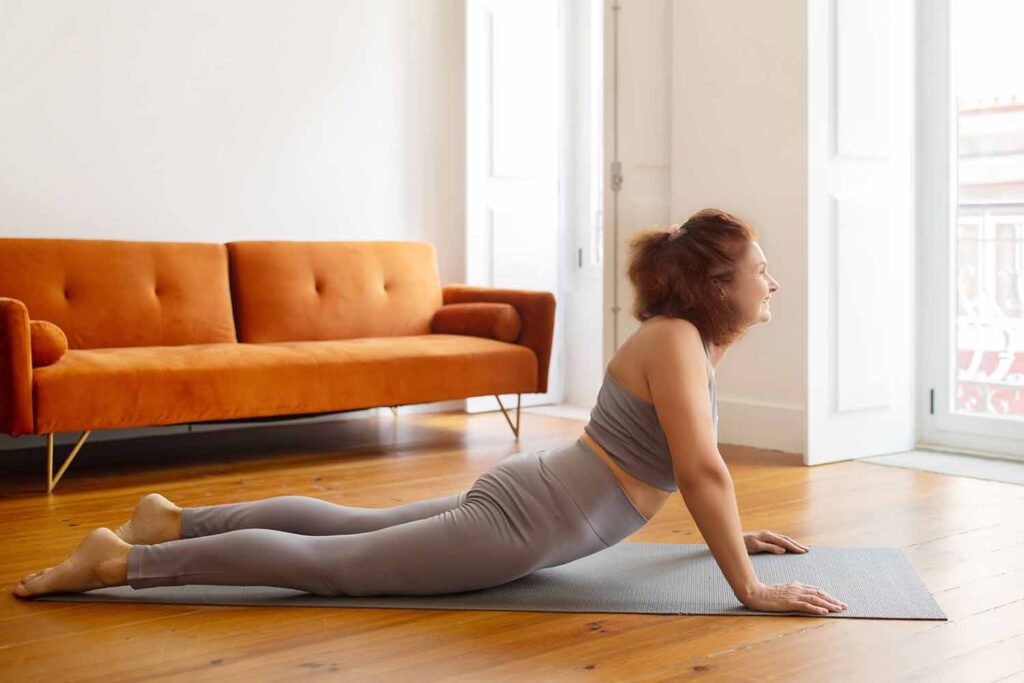
Sphinx Pose (Salamba Bhujangasana): Sphinx pose gently stretches the spine and chest, relieving tension in the back and shoulders. Practitioners can engage their core muscles to support the spine and deepen the stretch, or use props such as blocks to elevate the chest for a more gentle variation.
Supported Bridge Pose (Setu Bandhasana): Supported bridge pose gently stretches the spine and opens the chest, promoting relaxation and release of tension in the back and shoulders. Practitioners can use props such as blocks or bolsters to support the lower back and elevate the hips for a more restorative variation.
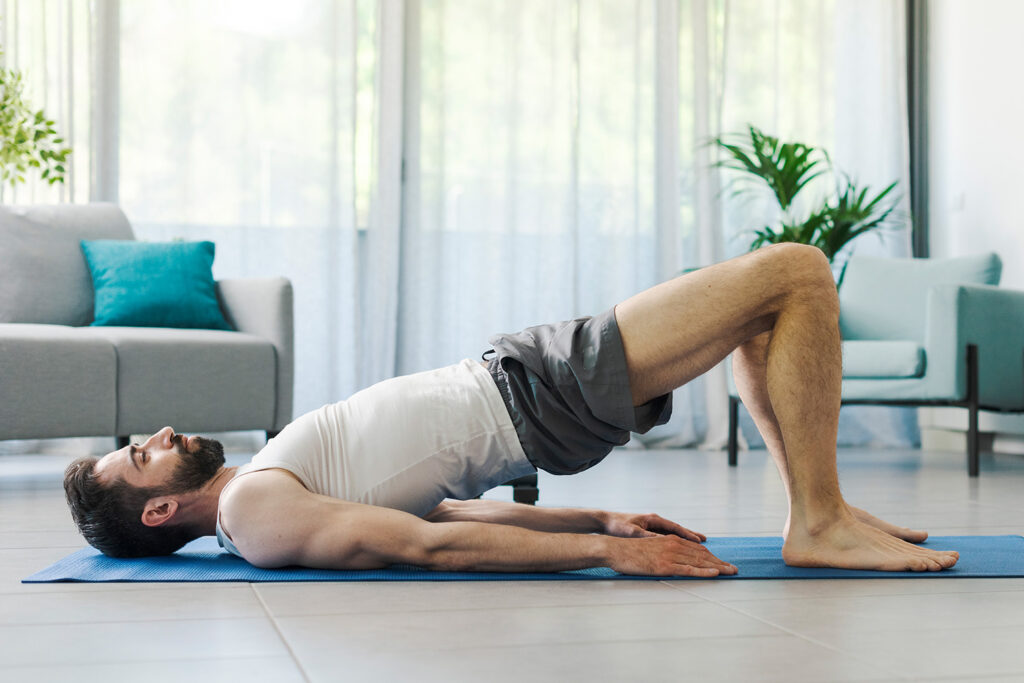
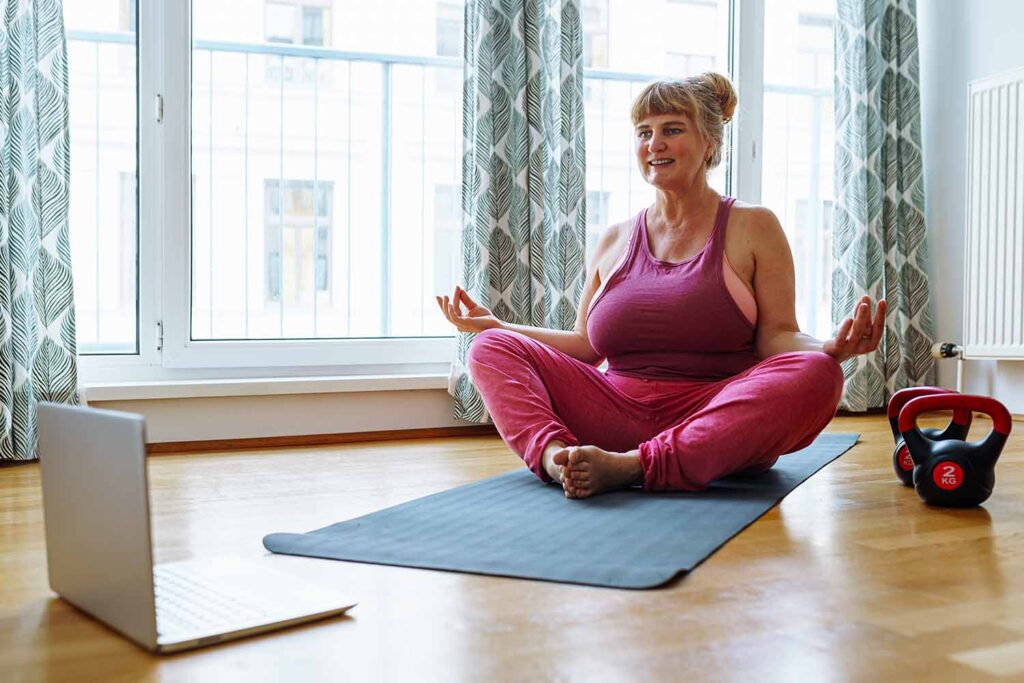
Butterfly Pose (Baddha Konasana): Butterfly pose opens the hips and groin, promoting flexibility and release of tension in the inner thighs. Practitioners can gently press their elbows into their thighs to deepen the stretch and fold forward for a more intense sensation.
How to Practice Yin Yoga Poses Safely and Effectively
Transitioning into the practice of Yin Yoga poses safely and effectively requires practitioners to approach each pose with mindfulness, awareness, and respect for their body’s limitations. Understanding how to practice Yin Yoga poses safely allows practitioners to enjoy the benefits of a yin yoga practice while minimizing the risk of injury.
- Listen to Your Body: Pay attention to your body’s signals and honor any sensations of discomfort or pain. Avoid pushing yourself into poses that feel beyond your edge, and instead focus on finding a comfortable stretch that allows you to relax and breathe deeply.
- Use Props: Props such as bolsters, blankets, blocks, and straps can provide support and assistance in Yin Yoga poses, allowing practitioners to find a more comfortable and sustainable position. Use props to modify poses and adapt them to suit your individual needs and limitations.
- Hold Poses Mindfully: When practicing Yin Yoga poses, aim to hold each pose for an extended period, typically ranging from one to five minutes or longer. Start with smaller time increments and slowly build up endurance in each posture. Focus on relaxing into the pose and allowing the muscles and connective tissues to gradually release tension and lengthen.
- Practice Patience and Persistence: Yin Yoga is a practice of patience and persistence, and progress may be slow and gradual. Be patient with yourself and trust that with consistent practice, you will experience improvements in flexibility, mobility, and overall well-being over time. Look for improvements in mobility and balance in other parts of your life as a result of yin.
- Breathe Deeply: Focus on deep, diaphragmatic breathing throughout your Yin Yoga practice, using the breath to support relaxation and release tension. Allow each inhale to expand and open the body, and each exhale to soften and relax deeper into the pose.
- Modify Poses as Needed: If a pose feels too intense or uncomfortable, don’t hesitate to modify it or come out of the pose altogether. Use props to support your body and find a variation of the pose that feels more accessible and sustainable.
Modifying Yin Poses for Different Body Types and Levels of Flexibility
Transitioning into the modification of Yin Yoga poses for different body types and levels of flexibility empowers practitioners to tailor their practice to suit their individual needs and limitations. Understanding how to modify poses allows practitioners to experience the benefits of Yin Yoga in a safe and accessible way, regardless of their body type or flexibility level.
- Use Props: Props such as bolsters, blankets, blocks, and straps can provide support and assistance in Yin Yoga poses, allowing practitioners to find a more comfortable and sustainable position. Use props to modify poses and adapt them to suit your body’s unique proportions and limitations.
- Adjust the Depth of the Pose: Depending on your flexibility level, you may need to adjust the depth of the pose to find a comfortable stretch. For example, in forward folds, you can bend your knees or place a bolster under your torso to reduce the intensity of the stretch.
- Focus on Alignment: Pay attention to proper alignment in each pose to ensure safety and effectiveness. Align your joints and spine in a way that feels supportive and stable, avoiding any excessive strain or discomfort.
- Listen to Your Body: Tune into your body’s signals and honor any sensations of discomfort or pain. If a pose feels too intense or uncomfortable, don’t hesitate to modify it or come out of the pose altogether. Remember that there is no one-size-fits-all approach to yoga, and it’s important to listen to your body and practice with self-compassion.
- Explore Variations: Experiment with different variations of poses to find what works best for your body. For example, in seated poses, you can use cushions or blocks to elevate your hips and make the pose more accessible. In standing poses, you can use a wall or chair for support if needed.
Guiding Students in Yin Yoga
Tips for Teaching Yin Yoga to Students
Transitioning into guiding students in Yin Yoga involves offering clear and compassionate instruction to support their journey on the mat. Keep in mind that a yin practice, or any yoga practice, gets better with consistent practice over time. Yin also has a tendency to emphasize differences in body structure and flexibility even more than a faster paced class, so be understanding that bone structure and maximum mobility due to true physical limitations can be frustrating for practitioners.
- Set the Tone: Create a welcoming and supportive atmosphere in the yoga studio, setting the tone for a calm and introspective practice. Encourage students to leave behind the distractions of the outside world and fully immerse themselves in the present moment.
- Educate About Yin Yoga: Begin each class by providing a SHORT overview of Yin Yoga, explaining its principles, the benefits of yin yoga, and key elements. Help students understand the differences between Yin Yoga and more dynamic styles of yoga, emphasizing the importance of stillness, surrender, and mindfulness in the practice.
- Offer Gentle Guidance: Throughout the class, offer gentle guidance and encouragement to help students navigate the poses and deepen their practice. Provide clear instructions on how to enter and exit each pose safely and effectively, and offer modifications and variations to accommodate different body types and levels of flexibility.
- Encourage Mindfulness: Emphasize the importance of mindfulness and awareness in Yin Yoga, encouraging students to tune into their breath, sensations, and thoughts. Guide them in cultivating a sense of presence and acceptance on the mat, reminding them to approach each pose with curiosity and compassion.
- Foster Self-Exploration: Encourage students to explore their edges and boundaries in each pose, but also to listen to their bodies and honor their limitations. Remind them that Yin Yoga is not about pushing or forcing, but about surrendering and allowing the body to open naturally over time.
- Provide Hands-On Adjustments: Offer gentle hands-on adjustments to help students find proper alignment and deepen their experience in each pose. Use verbal cues and demonstrations to illustrate key alignment points and encourage students to explore the sensations in their bodies.
Understanding Students’ Needs and Limitations
Transitioning into guiding students in Yin Yoga requires a deep understanding of their individual needs and limitations to ensure a safe and supportive practice. As a yoga practitioner, here are some strategies for understanding students’ needs and limitations effectively:
- Pre-Class Assessment: Conduct a brief assessment before each class to gather information about students’ injuries, medical conditions, and any specific concerns or limitations they may have. Encourage students to communicate openly and honestly about their bodies and any areas of discomfort or sensitivity.
- Observation and Awareness: Throughout the class, observe students’ alignment, movement patterns, and facial expressions to gauge their level of comfort and engagement. Pay attention to any signs of strain or tension, and offer modifications or adjustments as needed to support their practice.
- Encourage Communication: Create a safe and non-judgmental space where students feel comfortable expressing their needs and asking for assistance. Encourage students to speak up if they experience discomfort or if they need guidance on modifying a pose to suit their body.
- Offer Options and Modifications: Provide a variety of options and modifications for each pose to accommodate different body types, levels of flexibility, and physical limitations. Offer props such as bolsters, blankets, blocks, and straps to support students in finding a comfortable and sustainable position.
- Respect Individual Differences: Recognize that every student is unique, and that their bodies will respond differently to the practice of Yin Yoga. Avoid making assumptions or comparisons, and instead, honor each student’s journey and encourage them to practice with self-compassion and acceptance.
- Adapt the Practice: Be flexible and adaptable in your teaching approach, adjusting the pace, intensity, and sequence of poses to meet the needs of your students. Be willing to modify your lesson plan on the fly based on feedback from students and observations of their practice.
Incorporating Yin Yoga into Daily Life
Ways to Integrate Yin Yoga Practice into Daily Routine:
- Morning Ritual: Begin your day with a short Yin Yoga practice to set a positive tone and cultivate a sense of calm and centeredness before facing the demands of daily life. Focus on gentle stretches and grounding poses to awaken the body and mind gently. Select a challenge pose one day a week and work on increasing your time in that posture.
- Midday Break: Take a break during your lunch hour or midday slump to practice a few restorative Yin Yoga poses. This can help alleviate stress, boost energy levels, and enhance mental clarity for the rest of the day.
- Evening Wind-Down: Wind down in the evening with a longer Yin Yoga practice to release tension and prepare the body for restorative sleep. Focus on deep stretches and relaxation poses to promote relaxation and ease muscular tension accumulated throughout the day.
Harnessing Yin Yoga Benefits for Overall Well-being:
Incorporating yoga into your daily life allows you to tap into the myriad benefits of yin yoga for overall well-being:
- Stress Reduction: Yin Yoga helps activate the parasympathetic nervous system, promoting relaxation and reducing levels of stress hormones such as cortisol. By incorporating Yin Yoga into your daily routine, you can effectively manage stress and cultivate a greater sense of calm and balance.
- Enhanced Flexibility and Mobility: The gentle, sustained stretches of Yin Yoga help increase flexibility and mobility in the muscles and connective tissues, promoting greater range of motion and reducing the risk of injury.
- Improved Sleep Quality: Practicing Yin Yoga in the evening can promote better sleep quality by calming the mind and relaxing the body. By incorporating Yin Yoga into your bedtime routine, you can enhance the quality of your sleep and wake up feeling refreshed and rejuvenated.
Embracing a Balanced Lifestyle through Yin Yoga Practice:
Mind-Body Connection: Yin Yoga encourages mindfulness and awareness of the body, breath, and sensations. By practicing Yin Yoga regularly, you can cultivate a deeper connection to yourself and develop greater self-awareness and introspection.
Emotional Well-being: Yin Yoga provides an opportunity to release emotional tension and cultivate emotional resilience. By practicing Yin Yoga regularly, you can develop coping strategies for managing emotions and navigating life’s challenges with greater ease and grace.
Overall Health and Vitality: By integrating Yin Yoga into your daily routine, you can enhance your overall health and vitality, supporting physical, mental, and emotional well-being. Regular practice of Yin Yoga can help boost energy levels, improve mood, and promote a sense of inner harmony and balance.
Incorporating Yin Yoga into daily life is not just about physical exercise; it’s about cultivating a deeper connection to yourself, embracing a more balanced lifestyle, and nurturing overall well-being. By integrating Yin Yoga practice into your daily routine, you can unlock its transformative potential and experience greater vitality, resilience, and joy in every aspect of your life.
